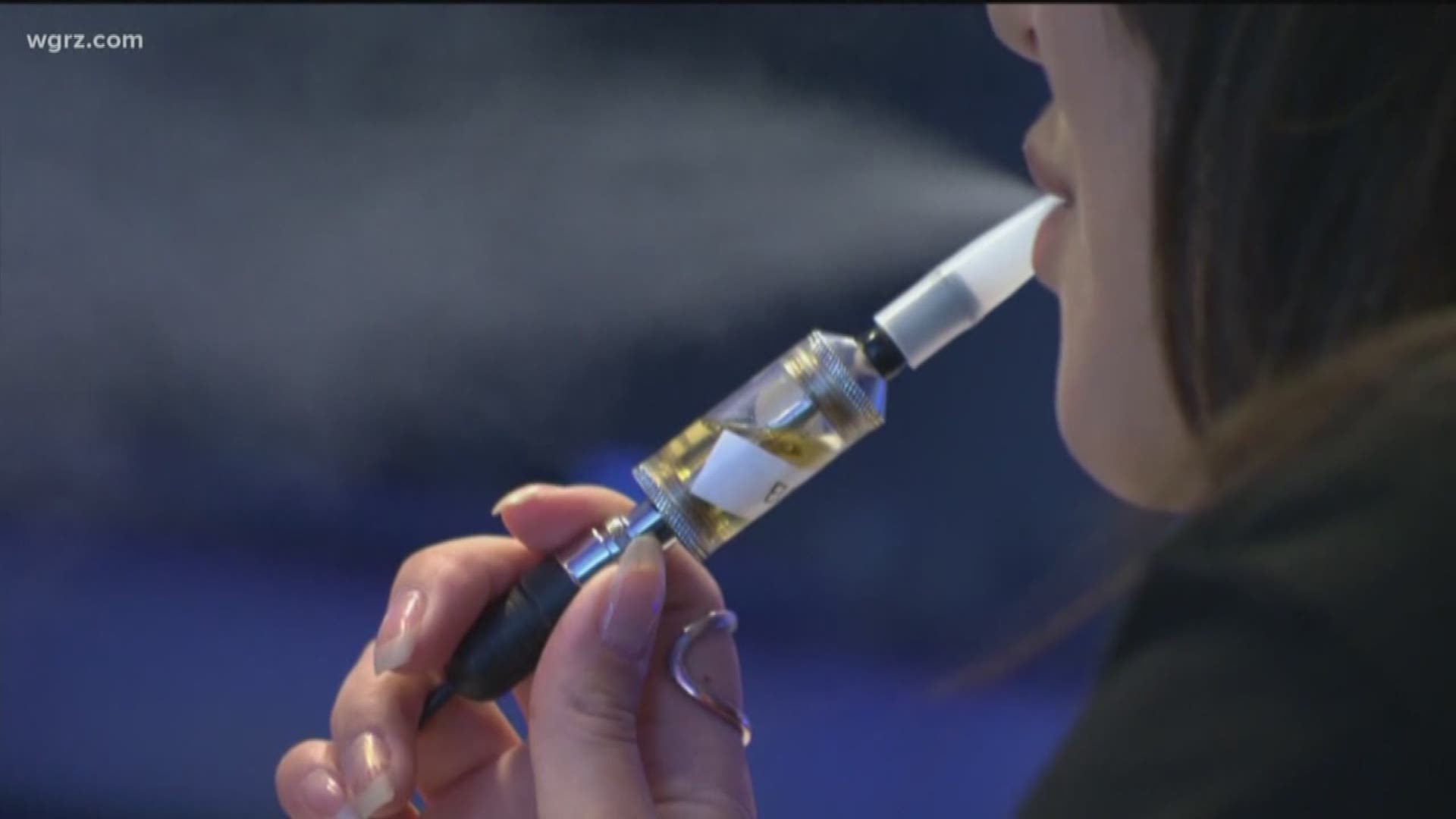KENMORE, N.Y. — Teen vaping is on the rise across the country, and two Western New York high school students saw that it’s a problem and decided to do something about it.
They did a survey this spring involving hundreds of their peers to find out how many kids are using e-cigarettes and why they're doing it. It reveals what teens are saying about vaping when adults aren't in the room.
"When did you start noticing people your age vaping?" 2 On Your Side’s Kelly Dudzik asked.
"Well, you know, vaping really started my sophomore year. It was roughly two or three years ago. That was when it really became common. That was when you couldn't really walk into the restrooms without having a puff of smoke in your face," McKinley Falkowski said.
Falkowski, a Kenmore East senior, doesn't vape, but he knows plenty of teens who do. And he says it isn't always obvious they're doing it.
"The first time I saw a vaping pen, I wasn't actually looking for it. It was actually plugged into a computer and charging," Falkowski said.
Falkowski is a student representative on the Ken-Ton School Board, and along with his counterpart, Laura D'Aquino, decided to tackle the teen vaping problem.
"We sat down one day, and we're like, 'Let's talk about vaping to the Ken-Ton Board of Education giving our annual report,' and we spoke up at the board meeting and said, 'Hey, vaping is this massive problem that needs to be dealt with,' " Falkowski said.
With the district's help, they surveyed 670 students mostly from KenEast and KenWest. They found 94 percent of the teens know someone who vapes. Thirty-six percent vape themselves, and of that group, 60 percent say they vape three times or more per day.
"We really wanted to find why do the students vape, and one of the interesting findings that we did find was students feel that they're pressured by companies. They see these online advertisements for vaping, they see these television advertisements for vaping, and they feel they're directly marketed to. If a student goes online, they go onto Google and look up vaping pens, that search follows them. Google is able to optimize searches, so they see vaping advertisements more," Falkowski said.
"Many students comment it's because of the cotton candy flavor, it's because of the pancake flavor, which sounds disgusting, because of all these other flavors, and if you go through the results you'll see, hey, wait a minute, those flavored products draw people into vaping. It keeps them there. We also wanted to find out how do students get access to these vaping pens because is it institutional because their parents are buying it for them or are their friends buying it for each other?"
They could give more than one answer for this question. Fifty-one percent of the teens said they got the vaping materials from a store, 46 percent said from a friend, 15 percent from a family member, 11 percent online, and 23 percent gave other answers.
After the survey, the two students did focus groups and one-one-one confidential peer conversations. Last month, they presented their findings and recommendations to the school board.
"These students that were in this focus group emphasized that they wanted the district to invest in these vape detectors, and they also once again emphasized that they want increased education of parents," Falkowski said at the meeting.
Falkowski says many students want the government to make it tougher for kids to get a hold of e-cigarettes and to ban ads for them.
"Do you think this process has gotten a conversation started that wasn't happening before?" Dudzik asked.
"Hopefully, you know, in the next couple of weeks I hope to go to my school's Share Decision Making Team and share the same results there and put the ball in their court," Falkowski said.
"What's your message to parents after finding out all of this information?" Dudzik asked.
"My hope is for the parents to keep educating themselves on vaping. It's not going away anytime soon," Falkowski said.
"What's your message to your peers?" Dudzik asked.
"Stop vaping. Stop vaping. It is not good for you and it will limit your future potential," Falkowski said.
This spring, the students are holding more leadership summits, adding display cases to the hallways highlighting the negative health impact of vaping.
They're also putting the dangers of vaping in a monthly student newsletter.
MORE ON WGRZ.COM

